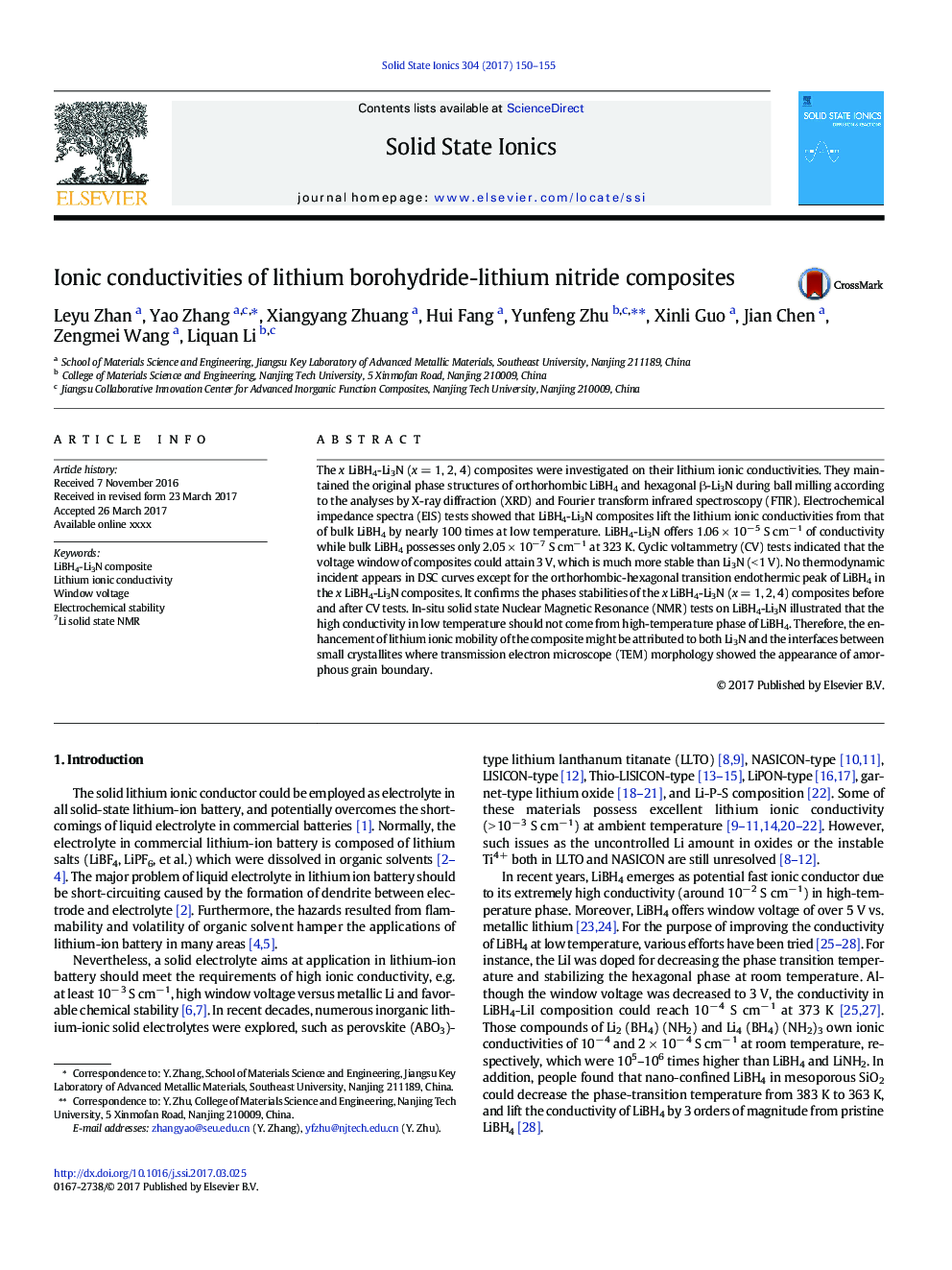| Article ID | Journal | Published Year | Pages | File Type |
|---|---|---|---|---|
| 5150390 | Solid State Ionics | 2017 | 6 Pages |
Abstract
The x LiBH4-Li3N (x = 1, 2, 4) composites were investigated on their lithium ionic conductivities. They maintained the original phase structures of orthorhombic LiBH4 and hexagonal β-Li3N during ball milling according to the analyses by X-ray diffraction (XRD) and Fourier transform infrared spectroscopy (FTIR). Electrochemical impedance spectra (EIS) tests showed that LiBH4-Li3N composites lift the lithium ionic conductivities from that of bulk LiBH4 by nearly 100 times at low temperature. LiBH4-Li3N offers 1.06 Ã 10â 5 S cmâ 1 of conductivity while bulk LiBH4 possesses only 2.05 Ã 10â 7 S cmâ 1 at 323 K. Cyclic voltammetry (CV) tests indicated that the voltage window of composites could attain 3 V, which is much more stable than Li3N (< 1 V). No thermodynamic incident appears in DSC curves except for the orthorhombic-hexagonal transition endothermic peak of LiBH4 in the x LiBH4-Li3N composites. It confirms the phases stabilities of the x LiBH4-Li3N (x = 1, 2, 4) composites before and after CV tests. In-situ solid state Nuclear Magnetic Resonance (NMR) tests on LiBH4-Li3N illustrated that the high conductivity in low temperature should not come from high-temperature phase of LiBH4. Therefore, the enhancement of lithium ionic mobility of the composite might be attributed to both Li3N and the interfaces between small crystallites where transmission electron microscope (TEM) morphology showed the appearance of amorphous grain boundary.
Related Topics
Physical Sciences and Engineering
Chemistry
Electrochemistry
Authors
Leyu Zhan, Yao Zhang, Xiangyang Zhuang, Hui Fang, Yunfeng Zhu, Xinli Guo, Jian Chen, Zengmei Wang, Liquan Li,
